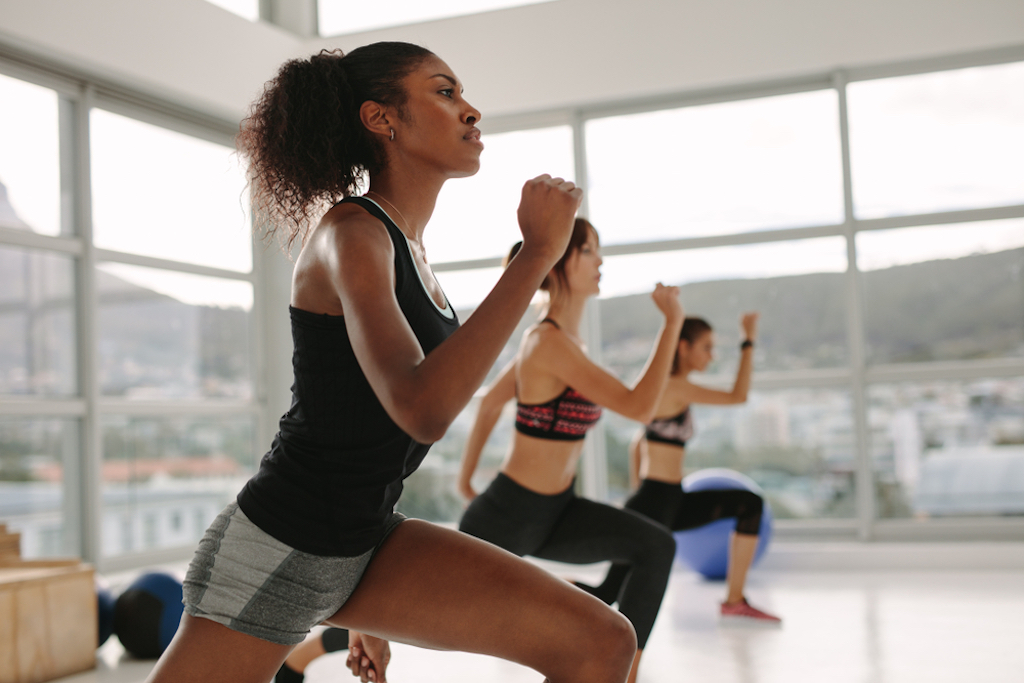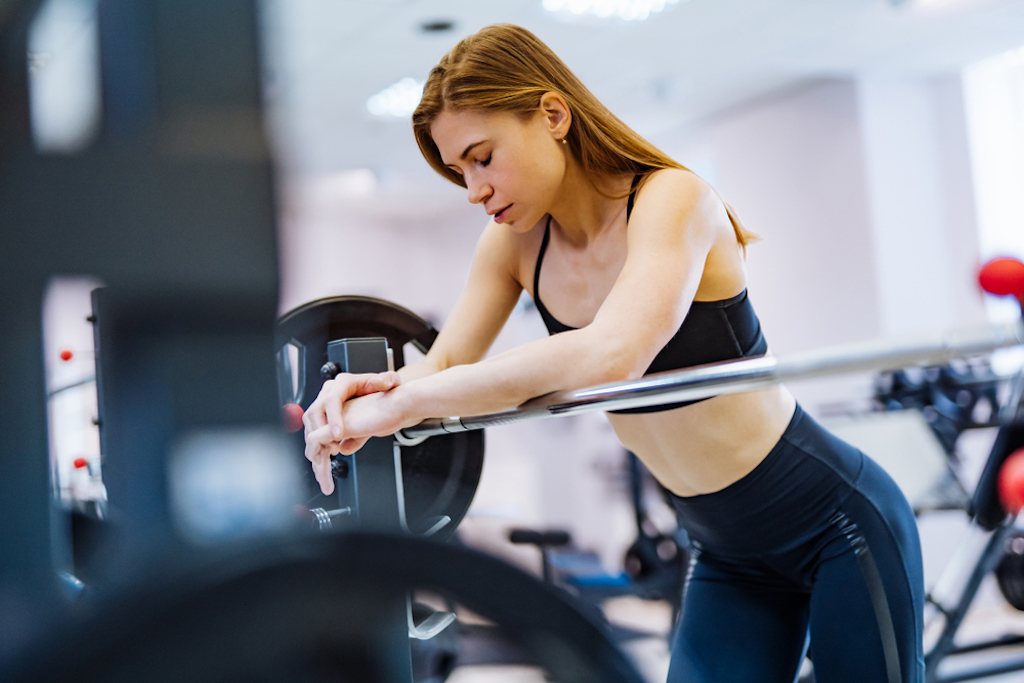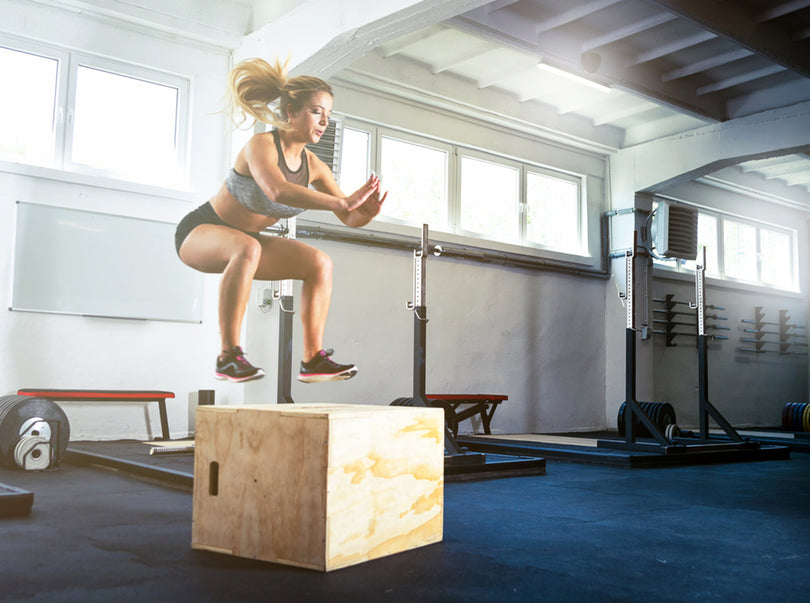How Long Should A HIIT Workout Be? Your HIIT Questions Answered!


Whether you’re just starting out or you’ve been training forever, you have probably heard of HIIT workouts.
High-Intensity Interval Training, also known as HIIT, has become a popular type of workout. It can be very effective to help you reach your fitness goals BUT, like many things health-related, there can be some confusion about how a HIIT cardio workout should be done and whether a short workout is effective.
Find out:
- What is a HIIT workout?
- LISS vs HIIT
- Benefits of HIIT cardio
- How long should a HIIT workout be?
- Examples of HIIT
- HIIT workouts for beginners
- HIIT cardio workouts
- HIIT workouts at home
- HIIT workouts with weights
- How important are rest periods during a HIIT workout?
- How often should you do a HIIT workout?
I’m going to help clear up some of this confusion, covering questions like ‘how long should a HIIT workout be?’ and ‘how often should you do them?’ — so keep reading for my answers!
What is a HIIT workout?
HIIT stands for High-Intensity Interval Training, which is a workout style that features short intervals of high-intensity cardio followed by a rest period.
Because your body is working at a high intensity, your heart rate increases and your ability to burn calories increases. Plus, if you are truly reaching the desired intensity, the increased fat-burning potential can continue even after the workout is done.
While the name High-Intensity Interval Training might sound overwhelming or scary, it basically means you will be alternating between tough work periods and rest or easier work periods. The important thing to remember here is that ‘hard work’ is relative — you will be pushing yourself to an intensity that is hard for you. I’ll explain this in more detail later on.

What is the difference between LISS and HIIT?
Low-Intensity Steady State or LISS cardio is a form of cardio where you maintain the same pace for a set period of time. This could be an activity such as walking on a treadmill, hiking, cycling, swimming or rowing.
The main difference between LISS and HIIT is the intensity. With LISS, the aim is to exercise at a steady, consistent pace — maintaining the intensity for the whole training session.
With HIIT, the workouts tend to be shorter but the intensity of the workout should be much higher.
What are the benefits of HIIT cardio?
There are two main reasons why people love a HIIT cardio workout — it can help to burn more calories and it can produce something called the ‘afterburn’ effect.
In basic terms, after you finish a HIIT workout, you can continue burning fat. Your body works harder to deliver more oxygen to your muscles, which means you are burning calories for longer.
How long should a HIIT workout be?
Typically, a HIIT workout should take 30-60 minutes including a warm up and cool down. The high intensity portion of the workout should typically be done within 15-20 minutes. If the workout is going for longer, you may not be pushing yourself to the intended intensity — and potentially not giving yourself the chance to reap the most benefits.
The goal of high-intensity training is to elevate your heart rate into a zone that is close to that of your maximum heart rate during the work periods. This relates back to what I was saying earlier regarding an intensity that is hard for you.
Your target heart rate zone is a personal guideline, so getting close to your maximum heart rate may be something to work towards — initially, you might aim to get your heart rate within the lower end of the target heart rate zone as a starting point.
HIIT workouts can also be tailored by varying the work-to-rest ratios. For example, beginners may use a 1:2 ratio, training all-out for 60 seconds and then resting for twice as long.
People who have been doing HIIT for longer may transition to a 1:1 ratio; that is, training at high intensity for 60 seconds and resting for 60 seconds before repeating.
As you progress with HIIT training, you may choose to begin shortening the ‘work’ periods slightly — for example, going from 60 seconds to 45 seconds.
Shorter work periods means you can reach a higher intensity (thanks to your increased fitness level) because you don’t have to sustain the work period for as long.
Just remember you want to progress to a tougher work-to-rest ratio, so you should reduce the length of your rest too.

Styles of HIIT workouts
There can be different styles for a HIIT workout. Tabata workouts are really popular because they can be done in a short time period.
Treadmill sprints are one of the most common ways to do a HIIT workout but if you don’t have access to a treadmill, you can simply head to a park and do sprints on the grass.
Here are some of the most popular types of HIIT workouts.
Tabata
Tabata involves 20 seconds of maximum effort ‘work’ time, followed by 10 seconds of rest, usually for eight rounds.
Each round lasts four minutes, which doesn’t seem like much but trust me when I say that they will definitely get you working up a sweat!
If you’re ready for a challenge, try my tabata leg workout.

EMOM
EMOM, or ‘every minute on the minute’ is where the entire workout is broken up into one-minute intervals. During the 60 seconds, your aim is to complete a specific amount of reps of a movement before the end of the interval.
The only rest you get is if you complete all reps before the 60 seconds is up! After every minute, you’ll start a new minute and repeat the process.
AMRAP
AMRAP stands for ‘as many reps as possible’, or ‘as many rounds as possible’, and you’ll repeat an exercise or rounds of several exercises, as many times as you can within a certain timeframe.
This style of training is used by many athletes for conditioning and is designed to push your body to its limits.

How important are rest periods during a HIIT workout?
The focus of high-intensity workouts is the intensity. You should be giving your all and really elevating your heart rate during the work period, then taking a rest break. Chances are you will feel so tired that you savour every second of that rest period.
The rest periods are also when your body prepares itself for the next work period, so don’t skip them!
HIIT workouts for beginners
During your first HIIT workout, aim to push yourself as much as you can during the work time. You should be able to give it your full effort for the first couple of intervals, but don’t worry if you can’t keep going at the same effort for the rest of them.
Continue to work hard every session, and you’ll soon find that your endurance and strength will increase and you’ll be able to complete more intervals at your maximum effort.
If you’re new to cardio, remember to always focus on your form and start with around two or three sessions each week if you aren’t completing any other type of exercise.
To get started with HIIT, you can combine exercises like these five quick exercises to create your own workout!
Always seek guidance from a fitness professional to make sure that the program you choose is suitable for your level of fitness.
HIIT cardio workouts
HIIT can include cardio, strength exercises — or both!
It also isn’t necessarily always high-impact. While you might typically associate high-intensity exercises with movements like burpees and tuck jumps, you can actually do HIIT sprints using an elliptical, treadmill or swimming using the work to rest ratios I mentioned earlier.
Here's some ideas for getting in a HIIT cardio workout:
Hill sprints
Sprinting on a flat surface is a fantastic way to push yourself, but hill sprints add a little extra something to your workout. They can magically combine traditional sprinting with a form of resistance, which can make you work more muscle groups.
Find a hill nearby that provides a slight incline (nothing too steep) and that you can run to the top of in around 30 seconds. Start running on the flat and push yourself to reach the top of the hill as quickly as you can. Walk back down the hill and repeat!
Boxing and Martial Arts
If you’ve never done boxing before, you are about to see how tough it really is! Working in all those jabs, upper cuts and hooks is no easy feat. Lots of girls will tell you boxing is not only a great workout, but it’s also a fantastic way to shake off frustrations from a tough day. You don’t have to set foot in the ring or follow any ‘Rocky’ montages — working a heavy bag or speed bag will definitely get your heart rate going. When you start working the bag, try to put everything you have into those moves!
Skipping
Skipping is one of those amazing exercises that works lots of different muscles and gets your heart racing. It’s fantastic for your coordination, it’s cheap and you can do it almost anywhere. A skipping rope packs up so neatly, so you can fit it in your suitcase for workouts on holidays or if you travel for work. I love using a weighted skipping rope to help tone while I skip. You can find one of my favourite jump rope workouts here.
If you already have the skipping moves down pat, there is nothing stopping you using them as part of your interval training! Your HIIT workouts can include double-unders (where the rope passes you twice in one jump) or high knees to make it extra challenging.
Rowing
Jump on a rower and do a 5-10 minute warm up at a lower resistance to wake your muscles up and prepare yourself for a more intense session. Once you’re warmed up, increase the intensity of the rower slightly before you start sprinting. Row as fast as you can for 30 seconds, then slowly or even rest for 30 seconds.
To help keep your intensity up, try putting on your headphones and listening to your favourite tunes (anything with a fast beat will help keep you powering through). Repeat the above interval for around 10-15 minutes before starting on a cool down. Give yourself between 5-10 minutes for cool down.
HIIT workouts at home
Because HIIT workouts often use bodyweight, it makes them easy to do pretty much anywhere you have enough space!
Start off by choosing a couple of exercises to create a circuit, and then decide how many reps of each exercise to do— 10 per side is a good place to start when planning your at-home workout!
Alternate between each exercise for a specific time — try 7 minutes — and keep going until the time runs out. Rest for one minute and continue with a second circuit made up of another two high-intensity exercises of your choice! Do this twice over for a total 28-minute circuit.
If you have basic pieces of equipment at home like a skipping rope, you can make cardio fun and create a whole workout around it, like this jump rope workout for beginners.
HIIT workouts with weights
High-intensity workouts can have added weights such as kettlebells or dumbbells, like I’ve used in my High Intensity Strength program (formerly BBG Stronger).
High-intensity resistance training (HIRT) can help to promote strength while helping to build endurance in an intense cardio workout.
Test your strength in this beginner High Intensity Strength workout and full-body High Intensity Strength workout.
How often should you do a HIIT workout?
You might already be sold on the positive effects of high-intensity workouts. Maybe you’re tempted to increase the number of workouts you’re doing in this style, especially because it is a short workout.
Before you start adding HIIT to each day of your workout planner, keep in mind that your body needs recovery time, especially after such an intense workout.
Just like any form of training, if you are not getting sufficient rest you can put yourself at risk of overtraining or an injury. Because HIIT requires so much of your body, make sure you are having a break of a day or two between each session as well.
Include HIIT in your fitness routine
If you’re following my BBG program, HIIT might already be part of your routine. Because your body really has to work hard, HIIT may not be the best option for a beginner — but it does give you a goal to work towards!
While HIIT workouts are short on time, they can have benefits for your body long after you finish the workout. Don’t be scared to try this style of workout, ladies! Mixing your workouts up can help you to avoid a plateau and it keeps training interesting.
* Disclaimer: This blog post is not intended to replace the advice of a medical professional. The above information should not be used to diagnose, treat, or prevent any disease or medical condition. Please consult your doctor before making any changes to your diet, sleep methods, daily activity, or fitness routine. Sweat assumes no responsibility for any personal injury or damage sustained by any recommendations, opinions, or advice given in this article.




<#= c.user.username #><#= moment(c.created_at * 1000).fromNow() #>
<#= c.html_body #> <# if (c.images) { #>
<# } #>